SAP S/4HANA is the next-generation business suite 4 software built on the SAP HANA, an in-memory database platform. SAP S/4HANA Modules provides intelligent business applications for intelligent enterprises.
SAP ERP Central Component (ECC) core modules such as Finance, Logistics are reorganized as Line Of Business (LOBs). In this beginners guide, we’ll take a closer look at the different SAP S/4HANA modules and how they can benefit your business.
Table of Contents
Introduction to SAP S/4HANA
SAP S/4HANA is an ERP software from SAP; a German software company gaint, that is designed to help businesses of all sizes streamline their operations and improve their bottom line.
It offers a wide range of SAP modules that cover everything from finance and logistics to sales and procurement. With SAP S/4HANA, businesses can gain real-time insights into their operations, automate key processes, and make better decisions based on data-driven insights.
SAP S/4HANA Modules
It’s predecessor SAP ECC is the most stable ERP software ever released by SAP. SAP ECC core modules have been restructured in SAP S/4HANA as Lines of Business (LoBs). The following are the main LoBs available in S/4HANA system.
- Asset Management
- Finance
- Human Resources
- Manufacturing
- Sourcing and Procurement
- Sales
- Service
- Supply Chain
- R&D/Engineering
Let’s get into details of these SAP S/4HANA modules aka LOBs.
1. SAP S/4HANA Asset Management
The SAP S/4HANA Asset Management LoB focuses on planning, scheduling, and executing the maintenance operations. With integrated and optimized processes in SAP S/4HANA, the maintance operations are much better. It includes following sub-modules.
- Plant Maintenance
- Environment, Health and Safety (EHS)
- Resource Scheduling
- Management of Change
Plant Maintenance:
The SAP S/4HANA Plant Maintenance aids in optimizing the resources such as people efforts, tools and materials for maitenance, and scheduled repairs. It also supports in responding rapidly to reported faults.
Environment, Health and Safety (EHS):
The SAP S/4HANA Environment, Health and Safety (EHS) helps in comprehensive management of business processes related to environment, health and safety of people. It provides support for the following main scenarios – Incident Management, Health and Safety Management and Environment Management.
Resource Scheduling:
The SAP S/4HANA Resource Scheduling provides necessary insights on current and forecasted maintenance activities along with available maintenance resources. From KPI dashboards to maintenance schedule simulations, Resource Scheduling helps in reducing asset downtime by optimizing the maintenance resources.
Management of Change:
The Management of Change is flexible and auditable tool for monitoring and implementing changes.
2. SAP S/4HANA Finance
The SAP S/4HANA Finance LoB focuses on finance related activities of a company in following areas
- Financial Planning and Analysis (FP&A)
- Accounting and Financial Close
- Treasury Management (TM)
- Financial Operations
- Billing and Revenue Innovation Management
- Governance, Risk, and Compliance for Finance
- Product Footprint Management (PFM)
Financial Planning and Analysis (FP&A):
FP&A in SAP S/4HANA Finance enables companies to perform business planning on an annual/monthly basis with financial planning activities. It facilitates continuous planning, forecasting, and analysis in three main areas – Strategic Planning, Finance Planning and Operational Planning.
It also includes following areas – Enterprise Controlling(EC), Investment Management (IM) and Controlling (CO).
Accounting and Financial Close:
Financial Accounting (FI) manages the all accounting data of an organization. It comprises the following sub-components:
- General Ledger (FI-GL)
- Accounts Payable (FI-AP)
- Accounts Receivable (FI-AR)
- Bank Accounting (FI-BL)
- Asset Accounting (FI-AA)
- Funds Management (FI-FM)
- Travel Management (FI-TV)
- Special Purpose Ledger (FI-SL)
- Joint Venture Accounting (JVA)
- Group Reporting (FIN-CS)
- Real-Time Consolidation (FIN-RTC)
- Revenue and Cost Accounting
Treasury Management (TM):
Treasury Management supports Cash and Liquidity Management, Payment and Bank Communications and Financial Risk Management activities in an organization.
3. SAP S/4HANA Human Resources
The SAP S/4HANA Human Resources focuses on the management of employees which includes Personnel Management(PA), Talent Management, Personnel Time Management(PT), Payroll(PY), and Training & Event Management(PE).
4. SAP S/4HANA Manufacturing
The SAP S/4HANA Manufacturing provides capabilities for planning and controlling production. It supports several manufacturing functions in following areas
- Production Engineering
- Production Operations (Executing and Control)
- Extended Production Engineering and Operations
- Data Management
- Production Planning
- Extended Production Planning and Scheduling
- Quality Management
5. SAP S/4HANA Sourcing and Procurement
SAP S/4HANA Sourcing and Procurement provides centralize and scalable procurement activities. The embedded ML-based analytics provides the all necessary insigths to predict the contract consumption for improved negotiations and material management. It enables matching and clearing of automated payables with proposals for items that couldn’t be cleared automatically.
The following are the main functions of Sourcing and Procurement
- Purchasing (MM-PUR)
- Invoice Management
- Invoice Processing
- Invoice Collaboration
- Supplier Management
- Classification and Segmentation
- Supplier Evaluation
- Generic Features
- Responsibility Management
- Redistribute Workload
- Flexible Workflow
- Material
- My Inbox
- Batch Jobs in Sourcing and Procurement
- Procurement Analytics
- Real-Time Reporting and Monitoring
- Spend Visibility
- Sourcing and Contract Management
- Source Assignment
- Purchase Contract Management
- Data Management
- Data Aging in Sourcing and Procurement
- Blocking of Personal Data in Sourcing and Procurement
- Data Archiving in Materials Management
- Operation Procurement
- Self-Service Requisitioning
- Requirements Processing
- Purchase Order Processing
- Purchase Order Collaboration
- Service Purchasing and Recording
- Further Functions
- Conditions and Price Determination
- Requirement Prioritization
- Version Management
- Approval Workflows
- Entering Text Printing and Transmitting Documents
- Release Procedures
- Manufacturer Part Number
- Consumption Based Planning
- Reference Characteristics in Purchasing
- Progress Tracking
- Addresses in Purchasing
- Evaluation
- Document Management System
- Central Procurement
- Integration Landscape
- Central Procurement Operations Monitor
- Central Requisitioning
- Central Purchasing Analytics
- Central Purchase Contracts
- Guided Buying for Central Procurement with SAP Ariba Buying
- Central Purchasing
- Central Sourcing
The information that was previously categorized under “Materials Management” in ECC is categorized now under SAP S/4HANA Sourcing and Procurement.
6. SAP S/4HANA R&D / Engineering
SAP S/4HANA R&D and Engineering includes following main areas to better manage enterprise-level projects, simplify product life cycle management, accelerate product engineering, and increase productivity using requirement-driven procedures, among other things.
- Enterprise Portfolio and Project Management
- Project Systems (PS)
- Commercial Project Management
- SAP Portfolio and Project Management
- Product Lifecycle Management (PLM)
- Product Safety and stewardship
- Product Compliance
7. SAP S/4HANA Sales
SAP S/4HANA Sales enables sales force support for your presales life cycle, from an appointment to the creation of leads and opportunities. Sales also supports your order and contract management, including pricing, sales quotations, and sales contracts. You can manage your data through data aging, by blocking and deleting personal data.
Customers can make claims, and you can process returns and refunds. Furthermore, fundamental features like availability checking and output management are at your disposal. Streamlining your business’s revenue-generating procedures is possible thanks to SAP S/4HANA’s integration capabilities.
The following are main areas in Sales
- Sales Force Support
- Order and Contract Management
- Sales Master Data Management
- Price Management
- Sales Quotation Management
- Solution Quotation Management
- Sales Contract Management
- Sales Order Management and Processing
- Business Solution Portfolio
- Sales Billing
- Solution Billing
- Sales Rebate Management
- Incentive and Commission Management
- Claims, Returns and Refund Management
- Sales Monitoring and Analytics
- Basic Functions
- Special Business Processes
- Integration
- APIs
- Situation Templates
- Data Management
8. SAP S/4HANA Service
SAP S/4HANA Service facilitates the implementation and maintenance of procedures for handling service contracts, service orders, service requests, service billing, and customer engagement. The service solution is used in many different industries and features subscription order management.
Following are high-level topics covered in SAP S/4HANA Service
- Core Service and Functions and Processes
- Interaction Center
- Service Contract Management
- Recurring Service
- In-house Repair
- Integrate with SAP Field Server Management
- Cash Management
- Data Management
- Service Monitoring and Analytics
- Master Data
With SAP S/4HANA 2023 version, the above topics are realigned and following are new high-level topic areas in SAP S/4HANA Service.
- Service Master Data and Agreement Management
- Subscription Order Management
- Cross functions
- Service Operations and Processes
- Interaction center
- WebClient UI
- Situation templates
- Data Management
- Customer Service (CS)
- Integration
9. SAP S/4HANA Supply Chain
With SAP S/4HANA Supply Chain, businesses can manage complex business processes like inventory optimization, order fulfilment, and logistics management with a unified platform.
The following are main areas in Supply Chain (SCM)
- Logistics Cross Topics (LO)
- Inventory
- Delivery and Transportation
- Warehousing
- Extended Warehouse Management (EWM)
- Advanced Order Promising
- Advanced Available-to-Promise (aATP)
- Business Order Scheduling (BPS)
- Extended Service Parts Planning (eSPP)
- Data Management in Supply Chain
Conclusion
SAP S/4HANA products are built on SAP’s in-memory HANA database, providing you with a unified view of your operations in real time across different SAP S/4HANA modules. The products are designed to be easy to use and reduce your organization’s data footprint.
Here are some specific examples of how SAP S/4HANA products can benefit your business:
- Unified view of your operations: SAP S/4HANA products provide a single source of truth for all of your data, including data from SAP S/4HANA modules such as Finance, Supply Chain Management, and Human Capital Management, so you can make better decisions faster.
- Real-time insights: SAP S/4HANA products use real-time data to give you insights into your operations that you can’t get from traditional ERP systems.
- Simplified data model: SAP S/4HANA products have a simplified data model that makes it easier to use and maintain your data.
- Easy to use: SAP S/4HANA products are designed to be easy to use, even for users with no prior ERP experience.
- SAP Fiori user experience: A modern, user-friendly interface that makes it easy to use SAP S/4HANA products.
- Reduced data footprint: SAP S/4HANA products can help you reduce your organization’s data footprint by storing data in a more efficient way.
If you are looking for an ERP system that can help you improve your business operations, SAP S/4HANA is a great option which support different SAP S/4HANA modules. The products are built on the latest technology and are designed to be easy to use and efficient. Contact your SAP representative today to learn more about how SAP S/4HANA can benefit your business.
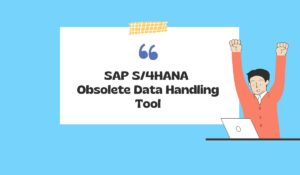

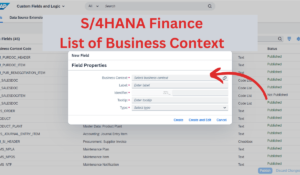
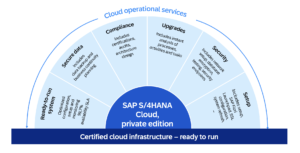
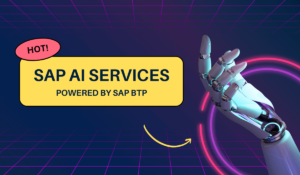
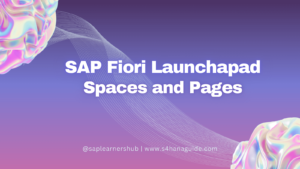

3 thoughts on “SAP S/4HANA Modules: A Comprehensive Guide”